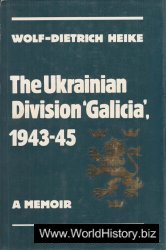Montezuma greeted the Spanish as they entered the city and invited them to be guests in a palace that had belonged to his father. To add to the impact of his arrival, Cortes had his cannons fired. One of the Aztecs, who had never heard cannon fire, said the sound had the same effect as psychedelic mushrooms.28
As the Spanish settled in as royal guests, they realized that they were not only failing to conquer the Aztecs but that they were in a precarious military position, surrounded by hundreds of thousands of warriors. Thus they decided to kidnap Montezuma and use him to gain control of the empire. A group of armed Spaniards went to Montezuma’s palace and forced him to return to the palace where the Spaniards were lodged, threatening him with death if he resisted. Rather than risking his life at the hands of the Spaniards, Montezuma permitted them to take him prisoner, claiming he was their “guest.”
Montezuma continued to rule the Aztec empire, even though Cortes controlled his actions. He announced that he was ruling in the name of the Spanish king and even turned the royal treasure over to the Spaniards.
Just as Cortes was seeing his ambitions fulfilled, he received word that a 900-man force sent by Cuban governor Velazquez had arrived on the Gulf Coast. Velazquez had instructed this force to arrest Cortes for not having returned to Cuba. Cortes placed the Aztec capital under the command of one of his officers, Pedro de Alvarado, and made a forced march to his rival’s camp in Veracruz. Before he arrived in Veracruz, Cortes sent runners ahead to contact the men of the other force. Then through a combination of bribes, tales of riches forthcoming, and playing officers off against Panfilo de Narvaez, their unpopular commander, Cortes undermined the will of the opposing force. When Cortes finally attacked under the cover of a storm, resistance was minimal. Narvaez later commented that he had been beaten by his own troops, not those of his rival.29
The newly arrived Spaniards, eager to share in the anticipated Aztec riches, joined Cortes, more than doubling his force. In addition he acquired many horses and weapons that Narvaez had brought.
Soon after this victory, Cortes received word that Aztecs in Tenochtitlan had revolted. After receiving permission from the Spaniards remaining there, the Aztecs had staged a religious festival. During the festival, Alvarado had ordered his men to fire into the crowd in what modern strategists would term a preemptive strike. He claimed that the Aztecs had planned the festival as the prelude to an uprising. After this attack, the Aztec nation rose in arms and besieged the Spaniards’ palace. Montezuma, still a captive, ordered the attacks to cease. The attacks then ended, leaving the Spaniards surrounded by the Aztecs.30
Cortes marched back to Tenochtitlan. The Aztecs allowed the returning force to cross their siege lines and join Alvarado in the palace, where they felt the Spaniards would be hopelessly trapped.31
From the roof of the palace, Montezuma again tried to quiet the Aztecs, but was met by jeers and rocks from the enraged attackers below. One of the rocks struck him, and he died shortly afterward, still a captive. The cause of Montezuma’s death remains a mystery. Some claim the rock wound was fatal; others claim the Spaniards murdered him. In any case, Montezuma’s death only heightened the fury of the besiegers.32
After enduring a month of siege, the Spaniards broke through the Aztec lines on the night of June 30, 1520. Cortes’s troops had to swim the gaps their besiegers had dug in the causeway to prevent their flight. Aztec attacks forced the escaping Spaniards to fight their way to the mainland. Many Spaniards were so laden with stolen treasure that they could not defend themselves. Cortes’s chaplain estimated that 450 Spanish died that night. In addition, several thousand Tlaxcalans probably died while fleeing the city. Mexicans refer to this Spanish defeat as la Noche Triste (the Night of Sorrows).33
Rather than engaging in hot pursuit, the Aztecs permitted the Spanish to regroup. The delay might be attributable to Alvarado having killed so many nobles that the Aztecs lacked a leader or to warriors being away tending their fields during the rainy season. The Aztecs might also have been observing a mourning period for those killed on la Noche Triste. Finally the Aztecs may have simply assumed the Spanish to be vanquished and unworthy of pursuit.34
Seven days later, as the battered Spanish forces headed for the protection of Tlaxcala, the Aztecs attacked them near the town of Otumba. They surrounded the beleaguered Spaniards. Then Cortes and five horsemen charged into the Aztec ranks, killed their commander, and triumphantly raised the captured Aztec imperial battle standard. For ancient Mesoamericans, battle standards served as both the representation of the state and the embodiment of a potent spiritual being whose presence and performance were critical to their success in battle. The Spanish were saved by Cortes’s audacious action and by the open space at Otumba that permitted the effective use of horses. After the battle, Cortes’s force marched on to Tlaxcala without further combat.35




 World History
World History









